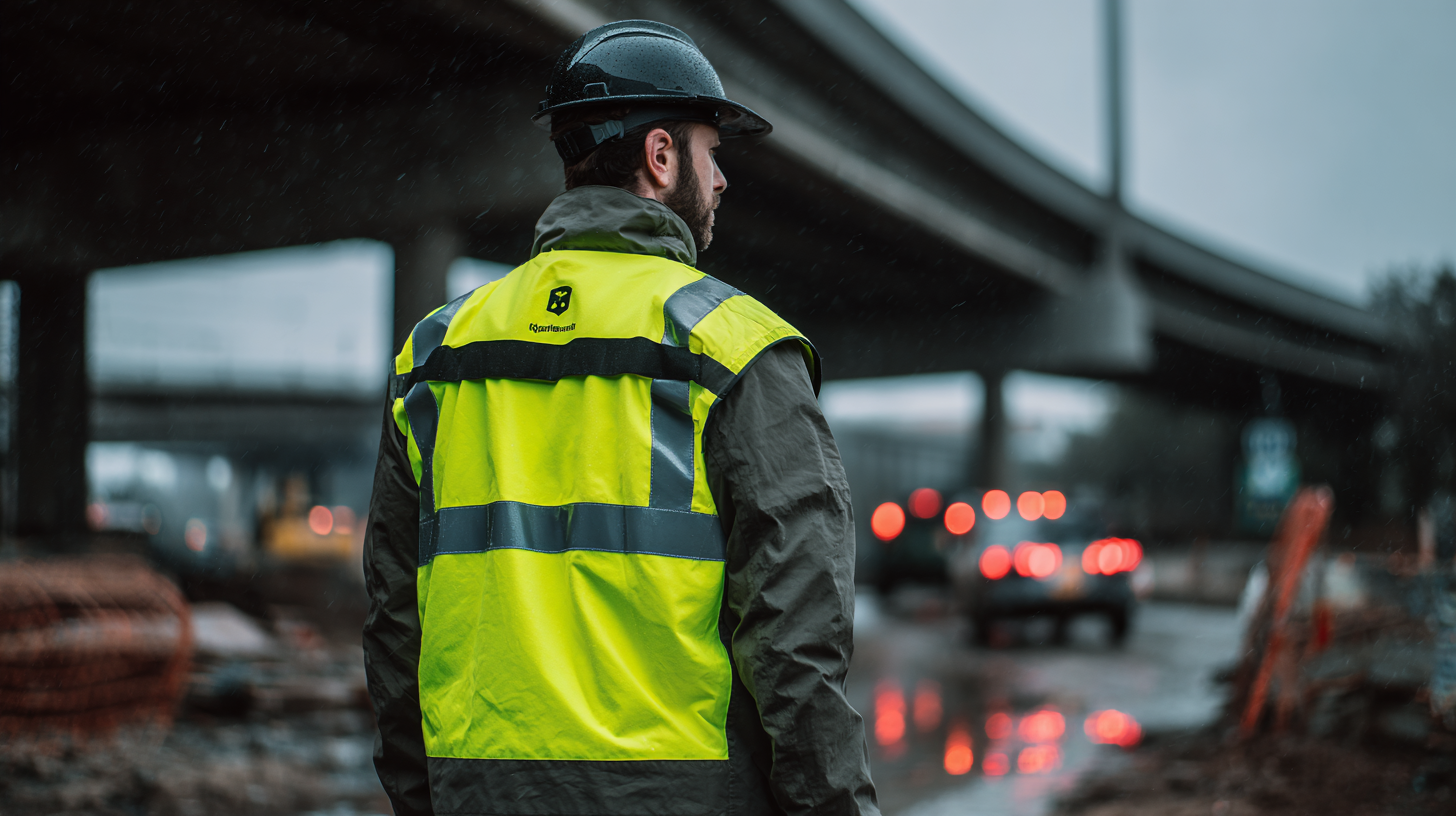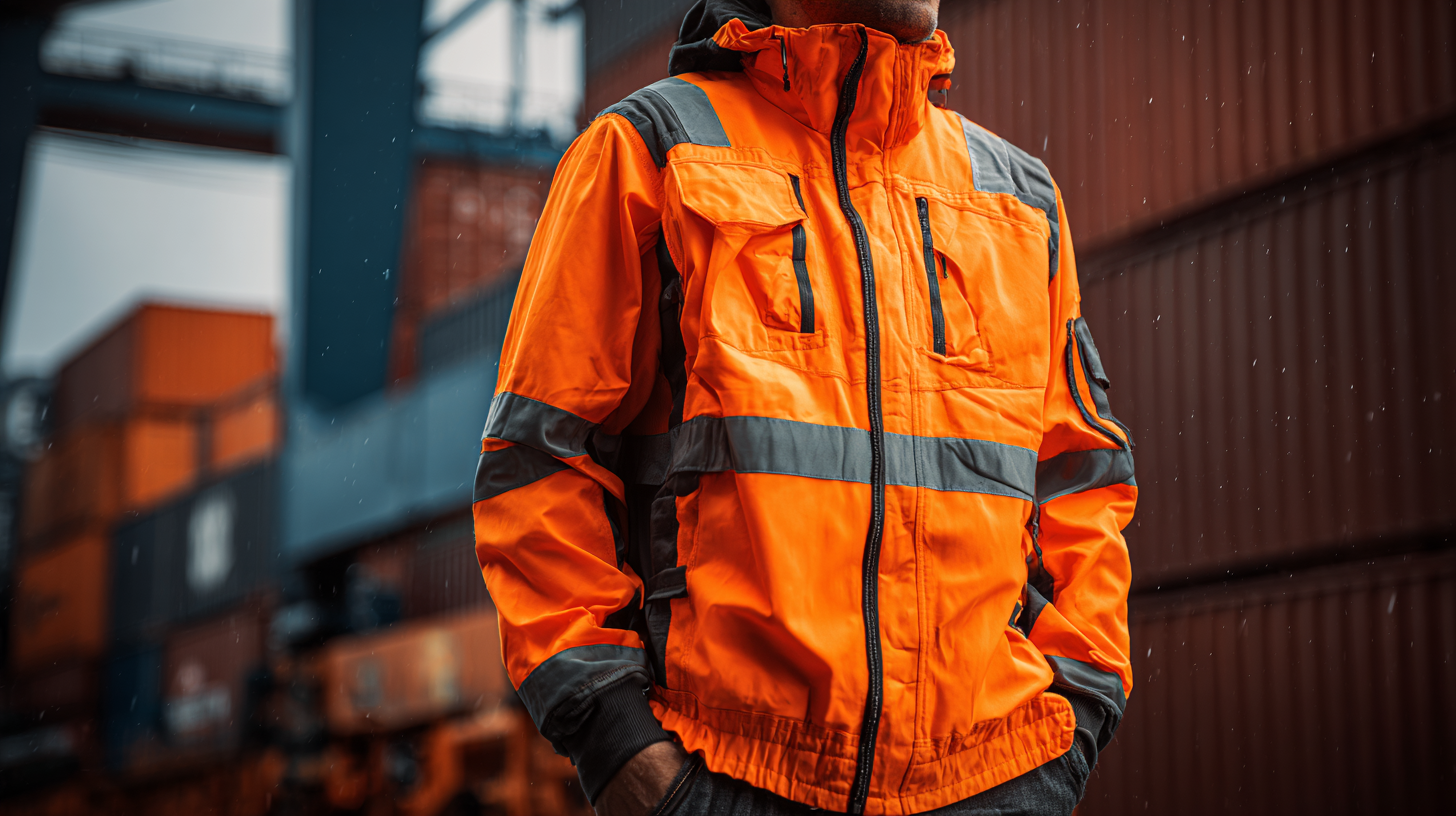In the ever-evolving landscape of safety apparel, the Hi Vest Jacket has emerged as a cornerstone of workplace protection, especially in high-visibility environments. As industries prioritize the safety of their workforce, the global safety apparel market is projected to reach USD 5.3 billion by 2024, growing at a CAGR of 6.9% from 2019 to 2024, according to a report by MarketsandMarkets. The rise in construction, manufacturing, and emergency services sectors drives the demand for high-quality visibility gear, underscoring the pivotal role of the Hi Vest Jacket in safeguarding workers. Moreover, with advancements in manufacturing technology and increased focus on quality control within the “Made in China” ethos, these jackets not only fulfill regulatory standards but also enhance user comfort and functionality. This blog will delve into the transformative impact of Hi Vest Jackets in safety apparel solutions, highlighting the significance of quality upgrades in the global marketplace.

 Hi-Vis jackets play a crucial role in enhancing workplace safety standards across various industries. These bright, reflective garments increase the visibility of workers, ensuring they can be seen in low-light conditions or hazardous environments. Whether in construction, roadwork, or warehouses, Hi-Vis jackets serve as a vital safety measure, allowing operators and passing vehicles to spot personnel from a distance. The use of high-visibility apparel is not just a practical choice; it can significantly reduce the risk of accidents and injuries, leading to safer working conditions.
Hi-Vis jackets play a crucial role in enhancing workplace safety standards across various industries. These bright, reflective garments increase the visibility of workers, ensuring they can be seen in low-light conditions or hazardous environments. Whether in construction, roadwork, or warehouses, Hi-Vis jackets serve as a vital safety measure, allowing operators and passing vehicles to spot personnel from a distance. The use of high-visibility apparel is not just a practical choice; it can significantly reduce the risk of accidents and injuries, leading to safer working conditions.
Moreover, the importance of Hi-Vis jackets extends beyond mere visibility. They often include additional safety features such as waterproofing, breathability, and lightweight materials designed to keep workers comfortable in different weather conditions. This versatility ensures that workers are not only protected but also able to perform their tasks efficiently. By integrating Hi-Vis jackets into safety protocols, organizations not only comply with safety regulations but also foster a culture of well-being, which can lead to increased productivity and employee morale.
When it comes to safety apparel, particularly hi-visibility (hi-vis) jackets, adherence to global standards is crucial for ensuring maximum protection. Various organizations like ANSI in the United States and EN ISO in Europe provide guidelines that dictate the minimum requirements for visibility, fabric quality, and reflective materials. Compliance with these standards not only guarantees that the garments perform as needed but also protects workers in hazardous environments from accidents.
Tip: Always look for certifications on hi-vis apparel. Jackets labeled with ANSI/ISEA 107 or EN ISO 20471 adhere to strict regulations, ensuring they meet visibility and safety benchmarks. This can provide peace of mind when selecting suitable gear for fieldwork.
Furthermore, ongoing innovation in materials and design plays a significant role in enhancing the effectiveness of hi-vis jackets. Manufacturers are increasingly using moisture-wicking and breathable fabrics, keeping workers comfortable while ensuring they are visible. These advancements contribute to compliance with safety standards while improving overall wearability.
Tip: Consider the environment in which the jackets will be used. For example, reflective tape and fluorescent colors are essential in low-light situations, while breathable materials are vital for hot and humid conditions, making safety compliance practical and effective.
The Hi-Vis jacket sector is witnessing significant growth, driven by a combination of evolving safety regulations and increased demand for protective clothing in various industries. The global high visibility clothing market is projected to expand from an estimated USD 1,814 million in 2024 to approximately USD 2,695.1 million by 2030, reflecting a robust growth trend. This surge is influenced by stringent safety standards, especially in sectors such as construction and transportation, where visibility is crucial for worker safety.
Additionally, the personal protective equipment (PPE) market in construction, projected to grow from USD 10.82 billion in 2024 to USD 16.30 billion by 2030, highlights the broader context in which Hi-Vis apparel operates. This demand is further underscored by the anticipated CAGR of 5.5% in the overall workwear market, which is set to reach USD 30.47 billion by 2032. As industries increasingly recognize the importance of safety apparel to comply with health regulations, the Hi-Vis jacket segment will likely be a key player in shaping future safety apparel solutions.
This bar chart presents key factors impacting the Hi-Vis Jacket sector. It highlights the percentage of compliance with safety regulations, the market growth rate, demand for eco-friendly materials, and the significance of technological innovations.
High-visibility (hi-vis) jackets have become a crucial component of workplace safety apparel, significantly impacting the reduction of workplace accidents. Statistics reveal that wearing hi-vis clothing can enhance visibility by up to 300%, particularly in low-light conditions. A report by the National Safety Council indicates that environments where workers wear hi-vis jackets record a 40% decrease in accident rates, underscoring the importance of visibility in safety protocols.
As the landscape of workplace safety continues to evolve, new technologies are being integrated into safety apparel solutions. The recent insights suggest that the adoption of wearable technology within hi-vis jackets can monitor vital signs and environmental hazards, further mitigating risks in high-stakes work environments. Companies investing in this advanced safety gear are not only complying with regulations but are also leveraging data-driven insights to foster a safer workplace. In a period where workplace injury costs continue to climb, enhanced visibility through hi-vis jackets combined with innovative technologies could be pivotal in safeguarding employees and enhancing overall operational efficacy.
When it comes to safety apparel, navigating import and export certifications is crucial for manufacturers to effectively reach global markets. Understanding the specific requirements of various regions can make a significant difference in the smooth rollout of products. Each country has its own regulatory standards, and being aware of these can help in avoiding costly delays and compliance issues. Manufacturers must conduct thorough research into the certifications required by target markets, which often includes testing for performance and safety standards.
**Tip:** Always stay updated on changes in regulations by subscribing to industry newsletters and participating in relevant forums. This proactive approach can aid in quickly adapting to new requirements.
Furthermore, collaboration with logistics partners who are well-versed in the certifications can streamline the import and export processes. Having a team that understands the intricacies of safety apparel regulations can enhance efficiency and reduce the risk of shipment complications.
**Tip:** Create a checklist of required certifications for each target market and ensure that every department involved in production and shipping is familiar with it to minimize errors.

